Christmas Carp – Czech Republic

The Christmas carp, once a festive tradition across central Europe, remains popular in the Czech Republic. The process of acquiring and preparing the carp is as important a tradition as eating it in many families. Many carp stalls pop up around towns in December, and families will purchase one and place it in their bathtub a few days before Christmas, though it is now more common to buy them frozen. In the Czech Republic the fish tends to be breaded and fried to bring out its flavour, while some neighbouring countries have other methods.
Bibingka – Philippines

Bibingka is a dish that is enjoyed for breakfast in the morning after Christmas Eve midnight mass. It is a rice-flour cake that is left doughy, and is cooked in a clay pot with a banana leaf lining directly over hot coals. Today, though, people are more likely to simply make it in a cake tin, due to the art of cooking over hot coals dying out in the country. This cake is comprised of rice-flour, coconut milk, butter, and eggs, and people enjoy making more luxurious versions too, enjoying bibingka with melted cheese, grated coconut, or duck egg.
Kolivo – Bulgaria

A few countries around Bulgaria have a similar dish, but Bulgaria’s Kolivo is individual to the nation. Kolivo is made of boiled wheat with sugar and walnuts, and is a dish often connected to Orthodox traditions. Kolivo can be prepared in a plethora of ways, and often has ingredients such as honey, rice, beans, seeds, or dried fruit added to it.
Borscht – Poland

In Poland, people celebrate Christmas Eve with their Star Supper, referred to as Wiglia. Wiglia is a huge meat-free Christmas feast where hay is strewn across the table to represent Jesus being born in a manger, and there are 12 courses to represent the 12 apostles. While the courses may vary, borscht remains a constant. Borscht is a soup made primarily of beetroot, while featuring some other vegetables, and is usually served with sour cream. It is a simple and cost efficient, hearty food with a vibrant colour, and is a staple in Poland, particularly in the Christmas season.
KFC – Japan

Christmas is not widely celebrated in Japan, since Christianity is practiced by less that 2% of the population. This doesn’t mean that the nation hasn’t come up with its own way of celebrating the holiday though. Japanese families now order KFC at Christmastime, enjoying takeaway fried chicken with their loved ones. What could be cosier than that? Some families even place their Christmas KFC orders several months in advance.
La Bûche de Noël – France

Like in much of mainland Europe, Christmas in France is celebrated on Christmas Eve. The traditional dessert for the big festive meal is a Bûche de Noël, known in English as a Yule log. It is based on the original tradition of the Yule log, which heralds from Paganism. Pagan families would bring a log home, sprinkle wine over it, and burn it on the Winter Solstice. Once Christianity took hold, families would do this on Christmas Eve. This tradition died out after World War II but the delicious cake version still remains. The Yule log dessert is comprised of sponge cake and chocolate buttercream rolled up to represent a log. It is usually sprinkled with grated chocolate for that unique bark texture on the outside.
Lechon – Puerto Rico

Puerto Ricans are overwhelmingly Christian, so they go all out at Christmastime. One Puerto Rican Christmas tradition sees the average family cooking an entire roast suckling pig, referred to as lechon. This particular seasoned version of the dish is specific to Puerto Rico and due to the long time it takes to prepare, often leads to an entire weekend of celebration. It is often accompanied by many other dishes and a drink called coquito, which is like a Puerto Rican coconut infused eggnog.
Ris á la mande – Denmark

Denmark around Christmastime is all about staying cosy and celebrating with family. That is what makes the warm sharing dish of ris á la mande so fitting for the nation during this season. This dish is a rice pudding made with rice, milk, almonds, vanilla, and whipped cream, and is served with a warm cherry sauce. The most exciting part of the ris á la mande isn’t even how tasty it is, though. When making this pudding, the cook will hide a single whole almond inside it, and whoever locates the almond in their share of the pudding is given a present!
Stollen – Germany

Fruitcake is a Christmas staple in many parts of the world, but Germany’s take on it with Stollen is certainly special. Stollen is usually loaf-like in its shape, and is packed full of fruit and marzipan, which gives it that distinct sweet almond flavour. This traditional cake originated in the 1500s, when Germans would gift it to one another in winter. Its name is often changed to fit the Christmas season, with people calling it Weihnachtsstollen or Christstollen.
Sorpotel – Goa, India

Goa is a western state in India which was previously a Portuguese colony. This is how Goa developed Christmas traditions, and is why sorpotel, a spicy stew, is enjoyed around the Christmas period. Sorpotel is pork-based, and the pig’s liver and heart are traditionally also a part of the stew. It is spiced with cinnamon, cumin, and chillies and slow-cooked to get the meat tender. Every household tends to have its own favourite way of making sorpotel, meaning different people’s dishes will rarely taste the same, but all are tender, spicy, and delicious.
Melomakarona – Greece

Over the Christmas holidays, the people of Greece take to baking these quick and easy yet delicious biscuits. Melomakarona are spiced Greek honey cookies made with orange zest. These biscuits include cinnamon, nutmeg, and cloves to give off a delicious festive scent that, when combined with the orange, is unmistakably Christmassy. They are also often sprinkled with walnuts as a finishing touch.
Faatah – Egypt

While not reserved solely for Christmas, the Egyptian dish Faatah is only made for special occasions, and with a reasonable number of Christians living in Egypt, Christmas is one of these important occasions. Faatah is a layered dish which includes rice, fried bread, lamb or beef, and deep fried poached eggs. The meat is cooked at length to give it appropriate tenderness, and the richness of the poached eggs combine all the flavours in a way that lets you know you’re eating it for a special occasion.
Christmas pudding – England
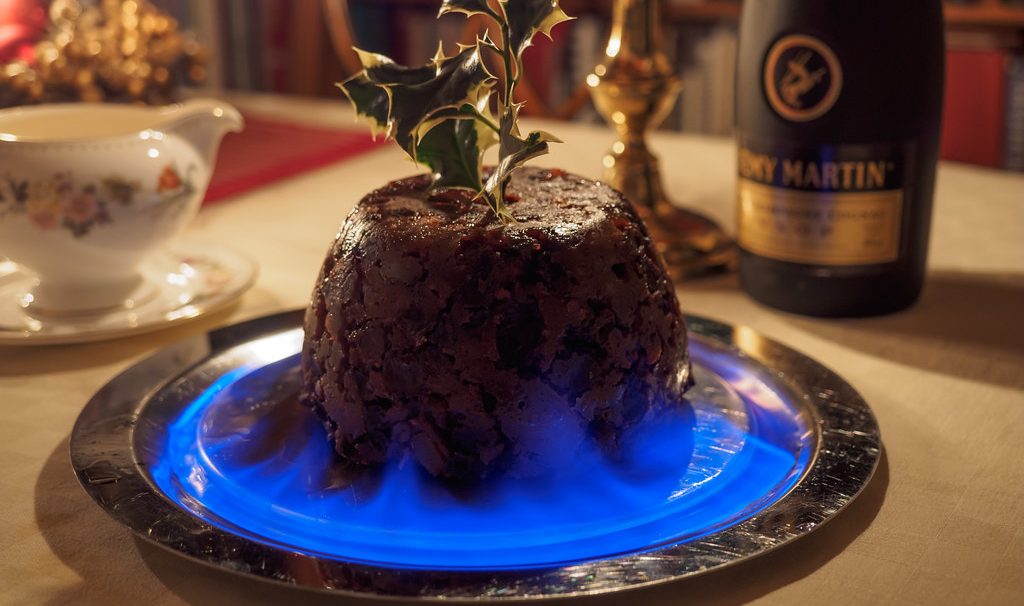
The tradition of Christmas pudding dates all the way back to the 1300s. It started off being predominantly oat based with fruit, nuts, and suet which was prepared five weeks prior to Christmas before Advent began. On Christmas it would be mixed with alcohol and either boiled or steamed before it was eaten. The heavy dessert remains similar to this day, often having extra alcohol poured over it to set the pudding on fire before it’s eaten. It would traditionally have a silver coin or other goody hidden inside it as a treat, though this is never the case with store-bought varieties of course!
Hallacas – Venezuela

In Venezuela, the food most specific to the Christmas festivities is hallacas. This food is in many ways like a tamale, and sometimes takes a full day to prepare, so the preparation is part of the family tradition of celebrating together for many households. Ingredients such as olives, chicken, raisins, onions, capers, pork, and pimentos are mixed together, folded into a cornflour dough and wrapped in a banana leaf. Hallacas are cooked by boiling or steaming, and are removed from the banana leaves before eating.
Lanttulaatikko – Finland

Like many nations, Finland celebrates Christmas with a large buffet style banquet spread of dishes. Many of these are found in several nations around the world. A dish specific to Finland, though, is lanttulaatikko, which is a swede bake or casserole. The swede is boiled and mashed before being mixed with cream, breadcrumbs, treacle, and nutmeg. It is then baked and enjoyed as a side as part of the Christmas Eve feast.
Black Fruit Cake – Caribbean

Belize, Jamaica, and other Caribbean nations all enjoy this black fruit cake around Christmastime. This cake is rich, dark, and boozy to the max. Like other Christmas cakes, this is a dense cake full of fruit and does not skimp on the alcohol, having a large amount of rum in the mixture. Its warming spices are found in festive desserts across the world, but this Caribbean dish offsets this with lime juice, making the cake’s flavour unique and bright.
Smalahove – Norway

Not a lot grows in icy Norway around Christmastime, which historically lead to the people there wanting to use every part of the animals they used for meat. Smalahove is a whole sheep’s head cooked alongside potato and rutabaga for the Sunday before Christmas. The preparation of the dish is interesting, with the sheep’s skull being split in two and soaked in water for two days. It is then salted, dried, smoked, and finally boiled or steamed before eating. Though it is a very traditional dish, it is now mostly eaten for novelty.
Kutia – Montenegro

The most religious people in Montenegro are likely to fast in the 40 days leading up to Christmas. The breaking of that fast occurs on Christmas, with a dinner that is both meatless and dairy free. Kutia is one of the dishes that is traditionally served on the day the fast is broken. It is a sweet wheat berry pudding. Dried fruit is combined with the wheat berries alongside honey, poppy seeds, and chopped nuts.
Ponche Navideño – Mexico

Not so much a dish as a drink, ponche navideño is a wonderful alternative to alcohol for anyone celebrating Christmas in Mexico. To make it, people simmer guava and apples with sugar cane, hibiscus and cinnamon. It is served in the week before Christmas, and its refreshing, fragrant flavours represent the feel of Mexico’s Christmas celebrations. It is sometimes served alcoholic by adding brandy or tequila, and is then renamed ponche con piquete.
Mattak and Kiviak – Greenland

Mattak and kiviak are traditional Inuit dishes always consumed when the days were at their darkest in mid-winter, but they became festive delicacies as Christmas was introduced to Greenland. Mattak is made from the raw hide of a white whale or narwhal, and kiviak is a bird called an auk wrapped in sealskin and left to ferment underground for several months. Greenland is one of the coldest inhabited places on earth, and mattak and kiviak are the perfect foods for combating the cold.
Apples – China

While Christmas is not traditionally celebrated in China, more younger people there are celebrating it as it becomes a more global and somewhat secular holiday. It has become an increasingly popular Christmas tradition for Chinese people to buy or gift apples which are covered in colourful or shiny paper and carved or decorated. The reason apples are gifted at Christmas is that the Chinese word for apple, Ping Guo, is very similar to the word for Christmas: Ping An Ye.
Buccellato – Sicily, Italy

Sicily is well known for its desserts and Christmas is no exception. While the rest of Italy have their own traditional Christmas foods, Sicily has its own cake for the season. Buccellato is a round cake which contains figs and various nuts. What makes the flavour of this cake so special is the inclusion of marsala, which is a fortified wine named after the Sicilian city of Marsala.
Mopane Worms – Southern Africa

Mopane worms are actually the caterpillars of the Gonimbrasia Belina moth, and they used to be eaten as a necessity in southern Africa rather than a pleasant December tradition. During times of drought which tend to hit around the same time as Christmas, mopane worms are ready for harvesting and thus became a part of the typical Christmas snacking. As the necessity for eating then died down, so did the number of people eating mopane worms, but they’re still considered a delicacy in some areas.
Turrón – Spain

Christmas dinner in Spain is probably going to involve a long stream of traditional dishes, many of which aren’t outside the norm for food that is consumed all year round. For dessert, though, the traditional way to go is Turrón, which is primarily consumed at Christmas. It is a toffee-like nougat made of honey, sugar, egg white, and almond, and is the perfect dessert to eat in whatever amount you like. Ideal for after that big Christmas dinner!
Rooster Doro Wat – Ethiopia

In Ethiopia, Orthodox people fast from November 25 until January 7, after which they celebrate with a large feast. Breaking this fast is part of the nation’s equivalent of Christmas which they call Ganna. Part of this extravagant feast is rooster doro wat, a chicken stew with boiled eggs which is packed full of spice. This is Ethiopia’s national dish, and while it is not exclusive to Ganna, it is always eaten at Ganna by Orthodox communities.
Feast of the Seven Fishes – Italy

While the Feast of the Seven Fishes originated in the south of Italy, it is now mostly a tradition in the United States, eaten by Italian-American families. This feast is a Roman Catholic tradition where people will abstain from meat and animal fat around the festive period, not including fish and seafood. On Christmas Eve, many kinds of seafood are served in around seven courses. When it was a more common tradition in Italy, all this seafood would be locally sourced from the coast, but now as a more American practice, it is more about Italian-Americans connecting to their family’s cultural roots.
Bacalhau – Brazil

After midnight mass on Christmas Eve, people of Brazil go straight home for their Christmas meal which carries on into the early hours of the morning. Bacalhau is a side dish to this magnificent feast. It is a salted cod dish with potatoes, onions, olives, and boiled eggs all doused in olive oil. Though it was originally introduced to Brazil by the Portuguese, it soon became a classic in Brazil featuring the local cod and other elements. Bacalhau is typically reserved for religious holidays, but is not made exclusively for them anymore, and Christmas is the main time of year for it.
Pavlova – New Zealand

New Zealand inherited a lot of Christmas foods from Britain such as mince pies exorbitant roasts. However, since it’s summer at Christmastime in New Zealand, this island nation has developed its own way of celebrating, often with a barbecue followed by a dessert called a pavlova. Pavlova is a large meringue cake topped with whipped cream and laden with berries and/or other fruit. It originated in New Zealand, and while pavlova is not a Christmas-specific dessert, a beachside Christmas in Kiwi-land is just not complete without one.
Clootie Dumpling – Scotland

Since it’s still part of the United Kingdom, Scotland shares several Christmas traditions, including food, with England, but the nation maintains its individuality with several of its festive dishes. One of these is the very Scottish dessert known as a Clootie Dumpling. It is a steamed pudding made of oats, breadcrumbs, flour, and beef suet with dried fruit and spices to give it flavour. The dumpling is wrapped in a cloth, or a cloot (hence the name), to be boiled for three whole hours. It is typically served with custard and a little whisky.
Selyodka Pod Shuboy – Russia

This extravagant layered dish is one of dressed herring, with selyodka pod shuboy directly translating to ‘herring under a fur coat.’ It is a kind of salad, and the layers that make it up are the pickled herring, grated boiled eggs, various vegetables, onions, and mayonnaise. It has a distinctive vivid purple layer which is achieved through grated boiled beetroot covered in mayonnaise. It might be an acquired taste, but it sure stands out on the dinner table!
Christmas Goose – Germany
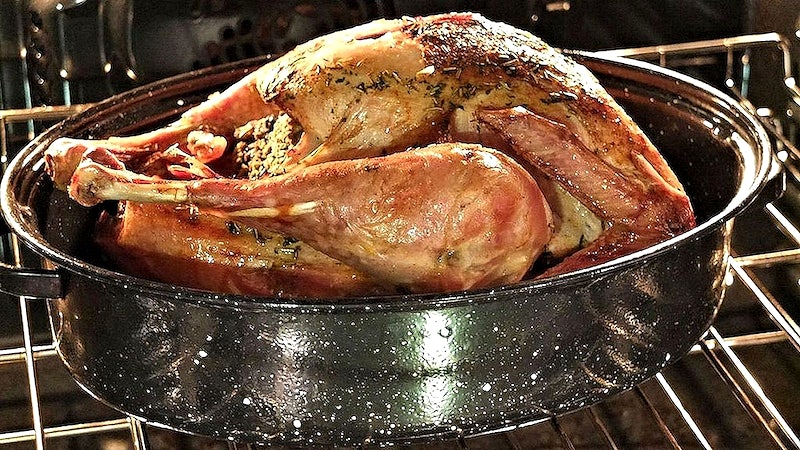
The German Christmas feast has historically always had a Weihnachtsgans or Christmas goose as the centrepiece. This tradition was once tied to St. Martin’s Day and has been a practice since the Middle Ages. The goose is roasted and often stuffed with chestnuts, apples, prunes, and herbs. The oldest known form of this recipe appears in a cookbook titled Das Buch von guter Speise dating back to 1350.
Cranberry Sauce – United States of America
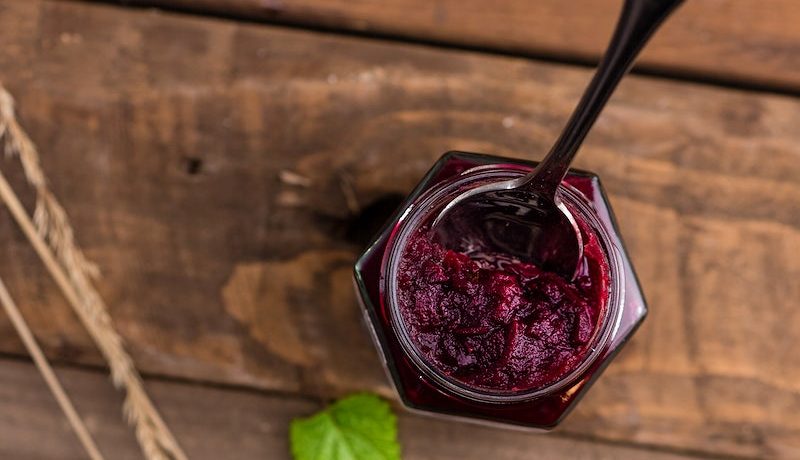
An essential in the USA’s large feasts including both Thanksgiving and Christmas is a cranberry sauce. While not its own dish, having these berries bringing a sweet tang to your cold weather feast is the only way to eat the Christmas meal, as far as Americans are concerned. Some will buy their sauce while others have their own tradition of making it from scratch. Either way, cranberry sauce is a Christmas must in the USA.
Puto Bumbong – the Philippines
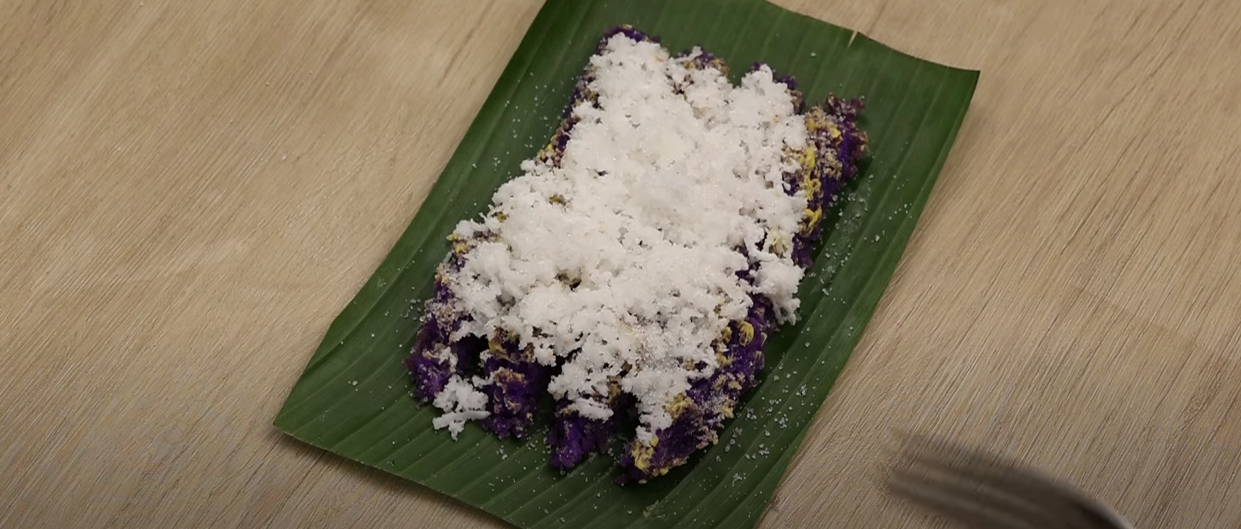
The Christmas meal in the Philippines is no small affair. A favourite festive delicacy is puto bumbong: black and white rice which, when mixed together, looks purple. The rice is soaked before being inserted into a bamboo tube where it is steamed, and then served with butter, sugar, and coconut. These rice cylinders add a beautiful pop of purple to the Christmas table.
Joulutorttu – Finland
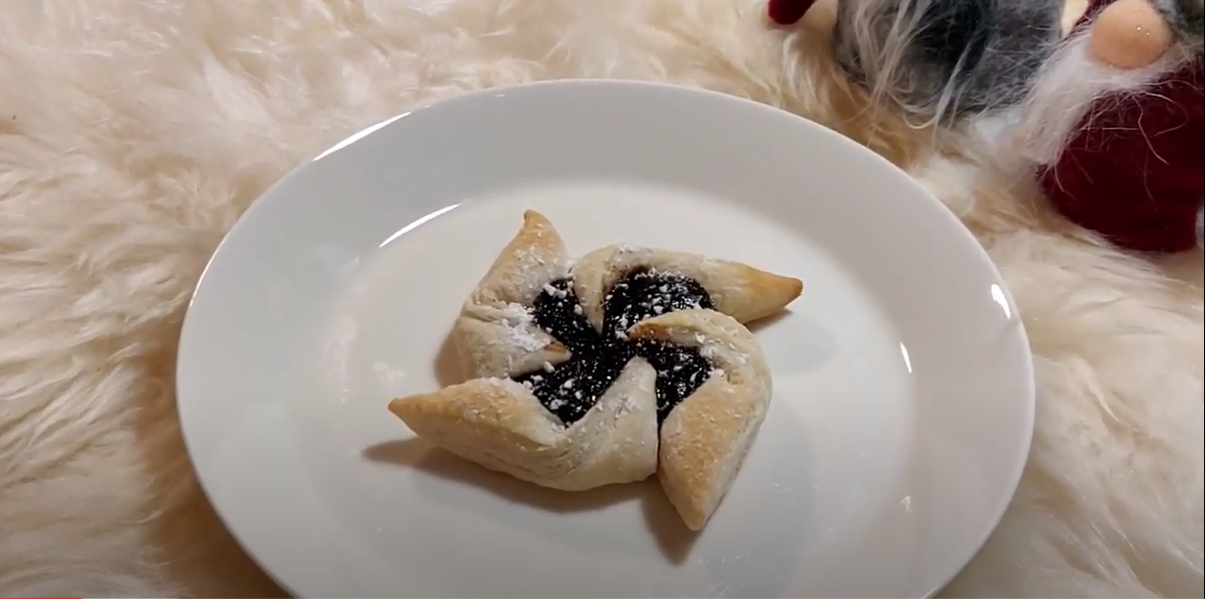
After the big savoury buffet of food served on Christmas in Finland, no traditional Finnish person would leave you without a joulutorttu, or jelly tart. A joulutorttu is a star shaped tart with stewed plums or plum jam in the centre. These pastries are the perfect sweet treat for the end of the night, and it is not uncommon to eat them alongside a warm drink.
White Christmas – Australia

White Christmas is a festive Australian dessert that is easy to make and therefore great for getting the kids in the family involved. It is a kind of slice made in a tray by combining just six ingredients: white chocolate, rice bubbles (aka rice crispies), dried cranberries, sultanas, slivered almonds, and desiccated coconut. The white chocolate is melted and mixed with all the other ingredients before being left to cool and harden. A cool, no-bake dessert is perfect for a sunny Christmas down under!
Cougnou – Belgium
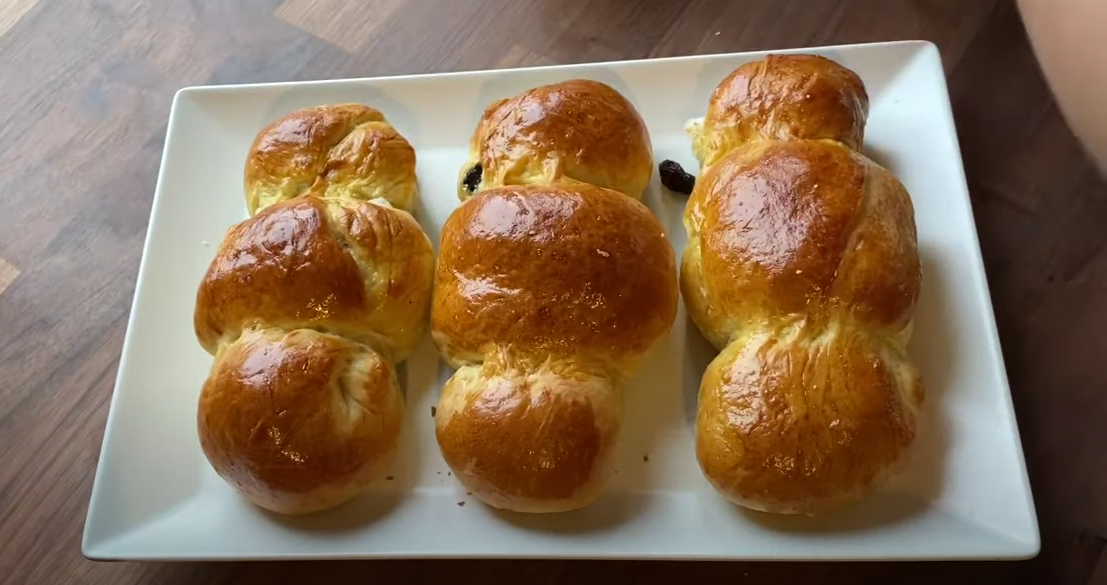
Like many countries, some form of bread is traditional to a Belgian Christmas. Unique to Belgium, though, is cougnou, or the bread of Jesus. The cougnou loaf loosely takes the shape of a swaddled baby, representing the baby Jesus. It is a buttery bread made with sultanas, keeping the common Christmas theme of placing fruit into baked goods.
Mince Pies – England
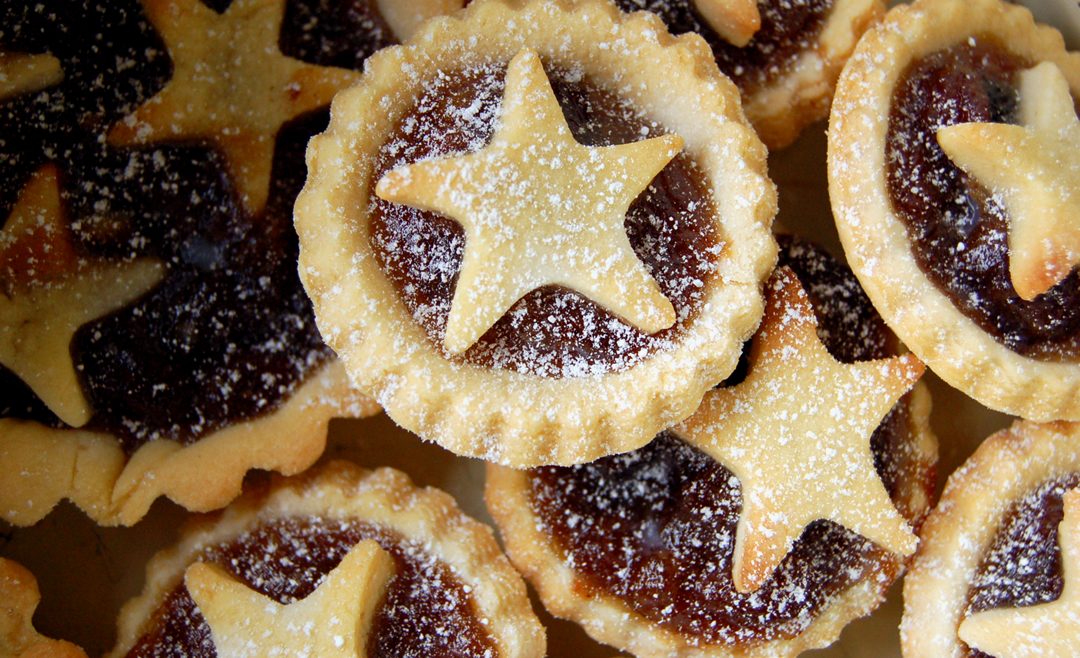
The tradition of the mince pie dates back to the 13th century due to the knights of the crusades returning home with many new spices. Mince pies are small pies filled with a spiced dried fruit mixture. The prevalence of dried fruit in Christmas dishes is due to preserved and dried fruit being the only kind available in winter, and as Christmas falls right after the winter solstice, it is an appropriate time to use a lot of it.
Caraway Seed Cake – Ireland
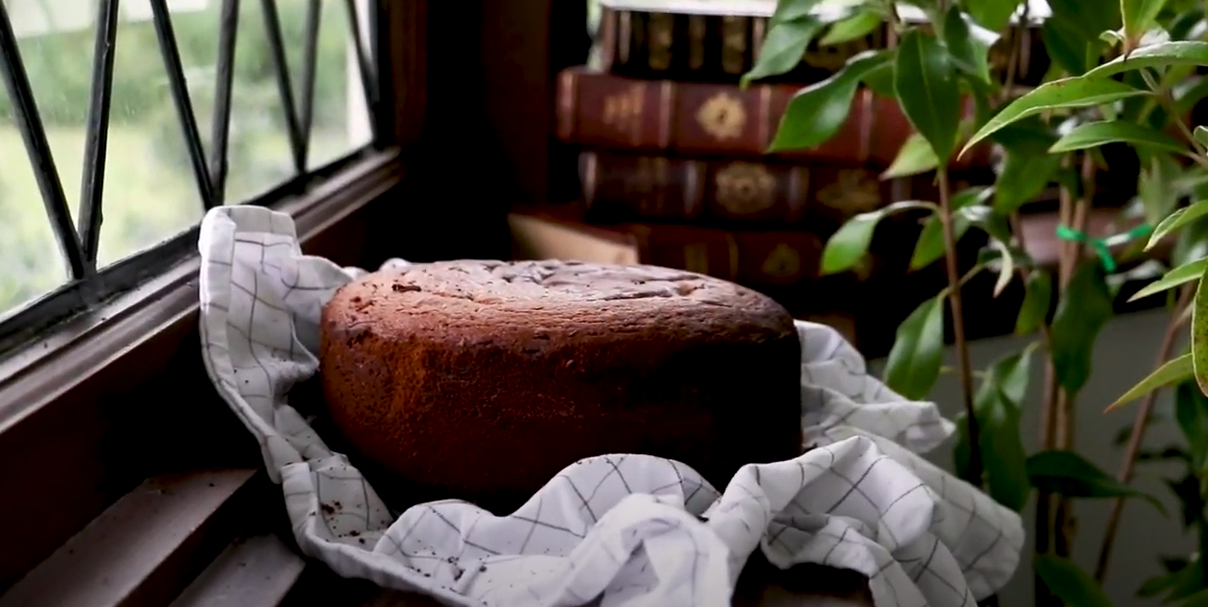
Receiving an entire cake for every person in the house on Christmas day may seem a little excessive, but this is what happens in Ireland amongst those who still enjoy the tradition. The cake is typically a simple round sponge packed full of caraway seeds. These seeds are wonderful antioxidants and great for your digestion, so encouraging the whole family to eat them in the form of cake is a great way to encourage a healthy appetite and body both.
Hangikjöt – Iceland
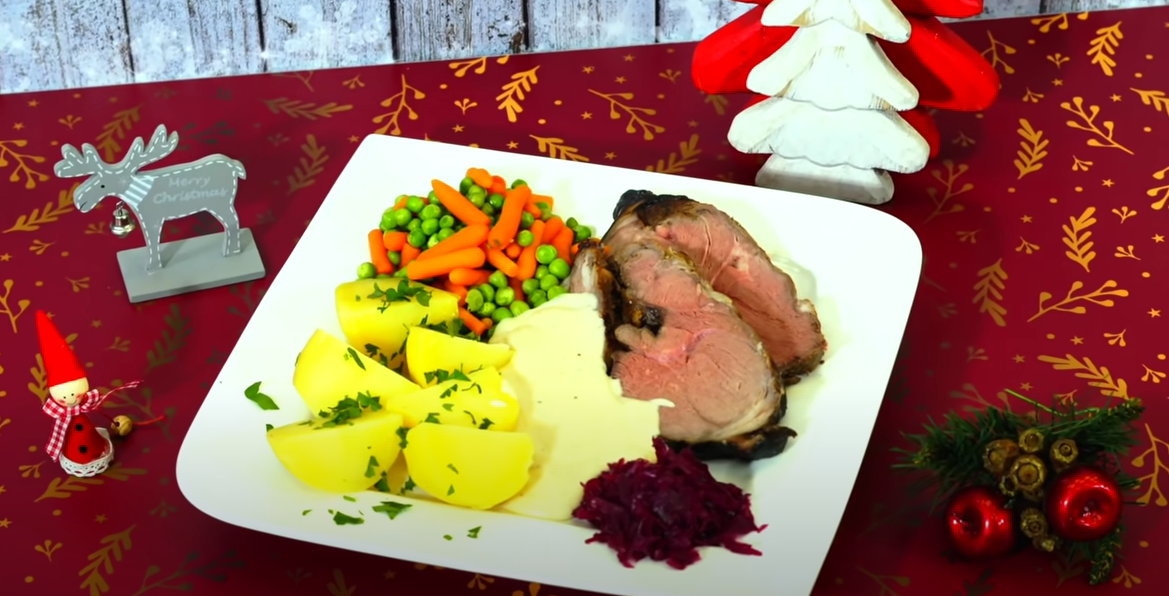
Hangikjöt is one of those traiditional foods that nearly everyone in the country partakes in. A recent survey showed that around 90% of Icelandic people eat hangikjöt at least once over the Christmas season. It is smoked meat, traditionally lamb, mutton, or horse which is served in thin slices either hot or cold. It is eaten alongside potatoes in béchamel sauce and peas, or is consumed inside flatbreads. Both tasty and hearty with a practical, on-the-go option.
Vanillekipferl – Austria
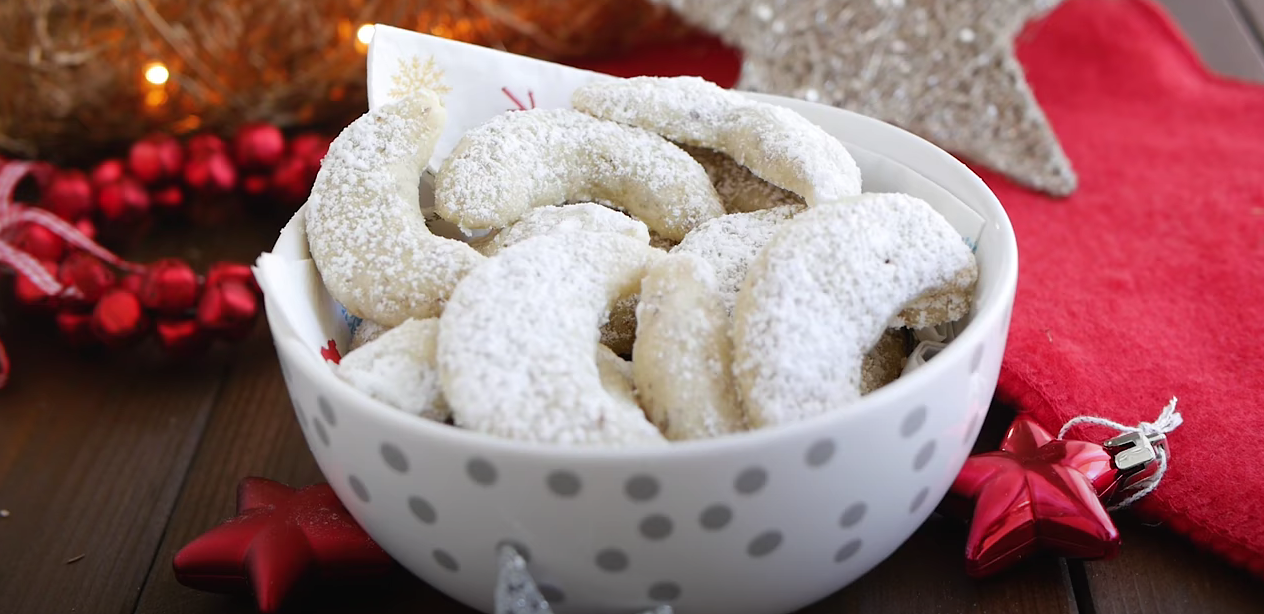
These crescent shaped biscuits look just as cosy as they taste. They are flavoured with almonds and are sprinkled with vanilla sugar. Due to their high levels of butter, eating Vanillekipferl gives a melt-in-you-mouth feeling that is just delicious. They are also enjoyed in surrounding European nations, and both the way they taste and the way they make your house smell are perfect for Christmas.
Pomegranate – South Africa
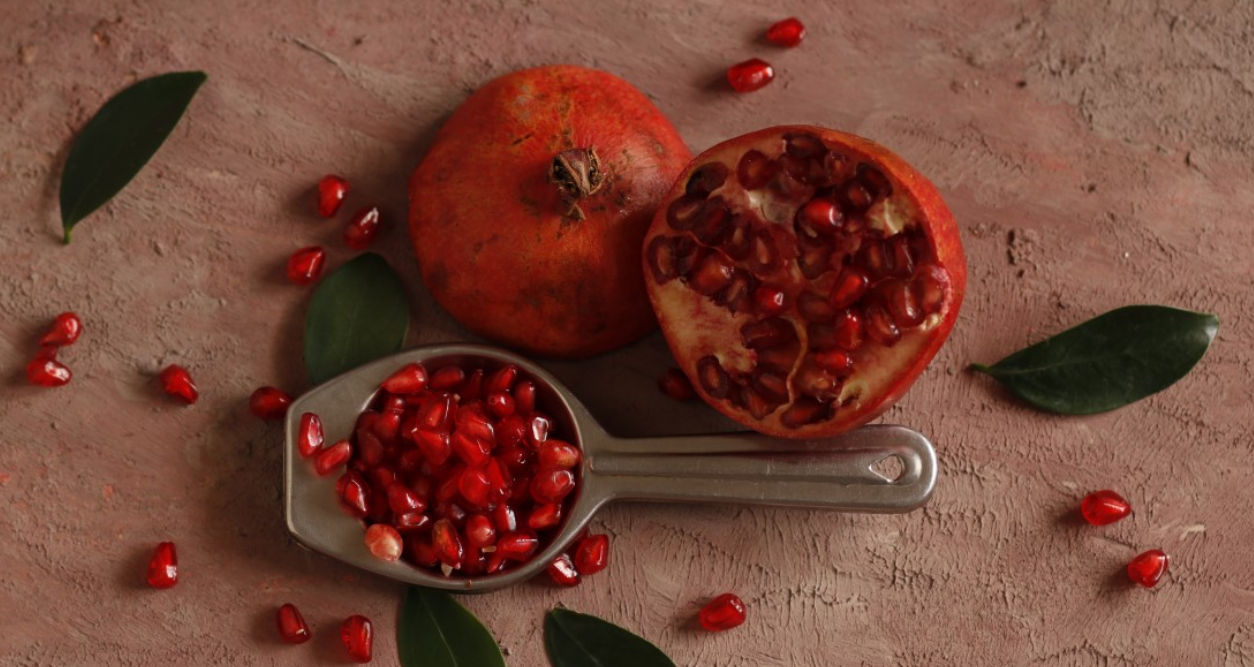
A traditional Christmas feast is common in South Africa with glazed ham, seafood, and fresh salads. Pomegranates are everywhere in the country and they are ripe around Christmas. This means it is common to sprinkle the entire festive feast in shiny red pomegranate seeds for a pop of colour and that sweet flavour. The kernels offset the saltiness of the savoury food much like a cranberry sauce might do with the added bonus of the pomegranate being fresh and bursting with flavour.
Julskinka – Sweden
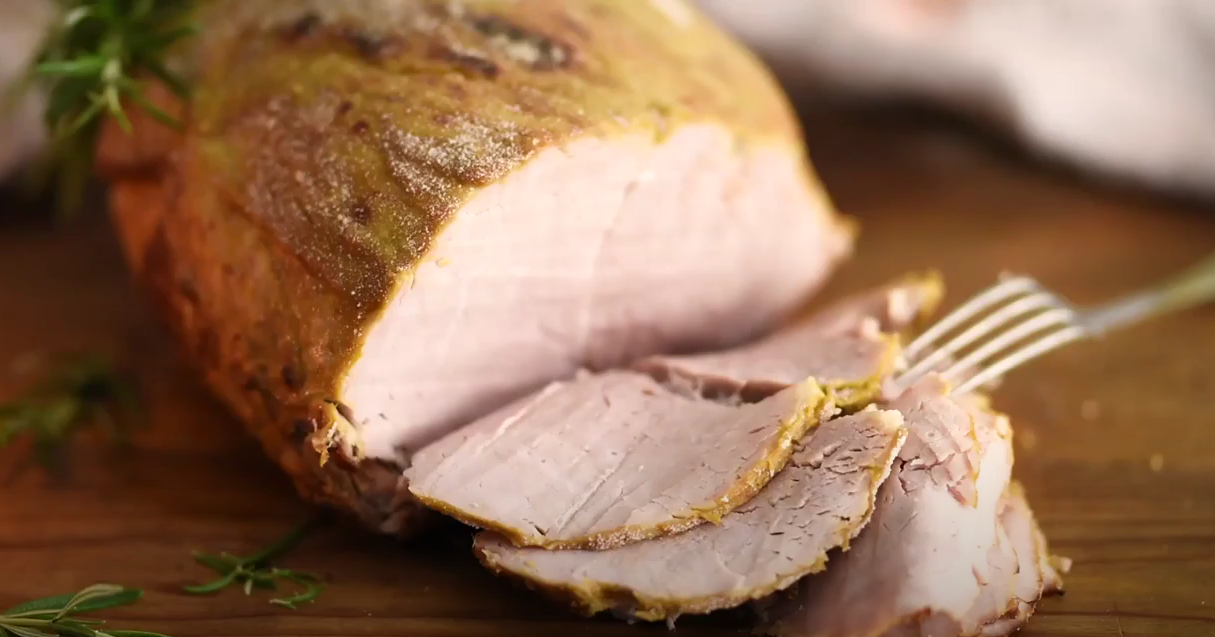
In Sweden the Smorgasbord style Christmas buffet is called the Julbord. Lots of countries make a ham for their Christmas dinner centrepiece, but the Swedish way of doing it is called a Julskinka. The Julskinka is a Christmas-specific version of a ham which is cured with salt, unsmoked, and has a somewhat sweet crumb coating all over it. This is either achieved with sugar and breadcrumbs, but sometimes with ginger biscuits for that spiced flavour.
Menudo – Mexico

Menudo is a dish that is typically prepared on Christmas Eve, due to its cooking time typically lasting five hours. It is a Mexican soup made of tripe in a red pepper based broth. It is also seasoned with lime, onions, oregano, and alkali treated corn kernels called hominy. Menudo is cooked for many different occasions but is a definite staple for Christmas Day.
Panettone – Italy
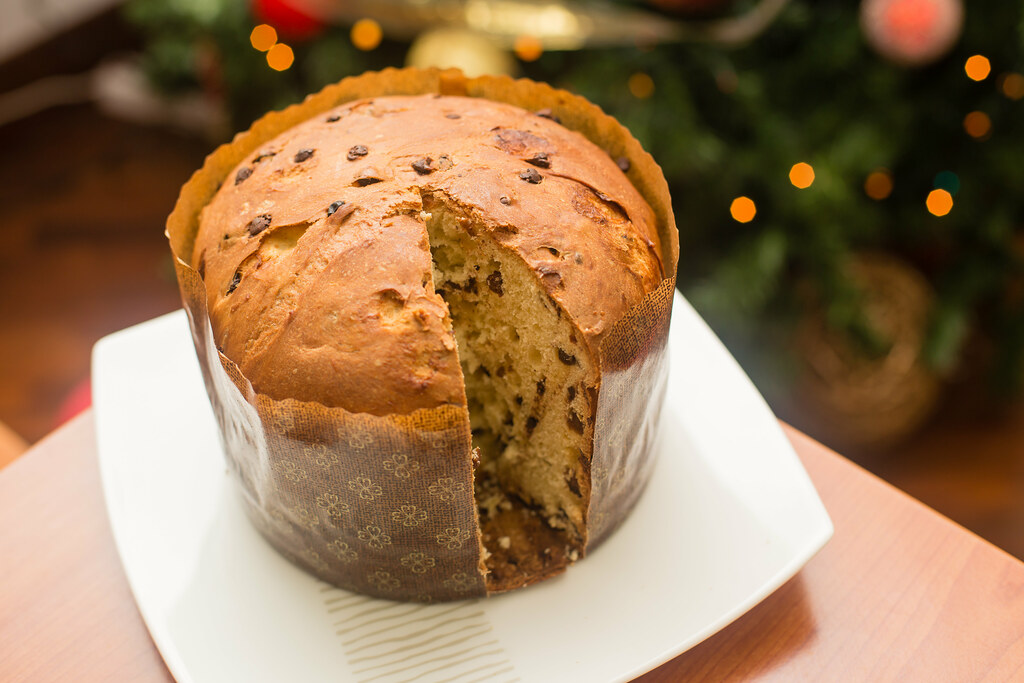
Most of Italy partakes in the festive tradition of making, or at least eating, panettone. Panettone is a baked good that is somewhere between a sweet bread and a cake. It typically has candied fruit peel and dried fruits throughout the dough. This sweet treat is popular enough that you’ll now find it around the world through the winter.
Speculaas – the Netherlands
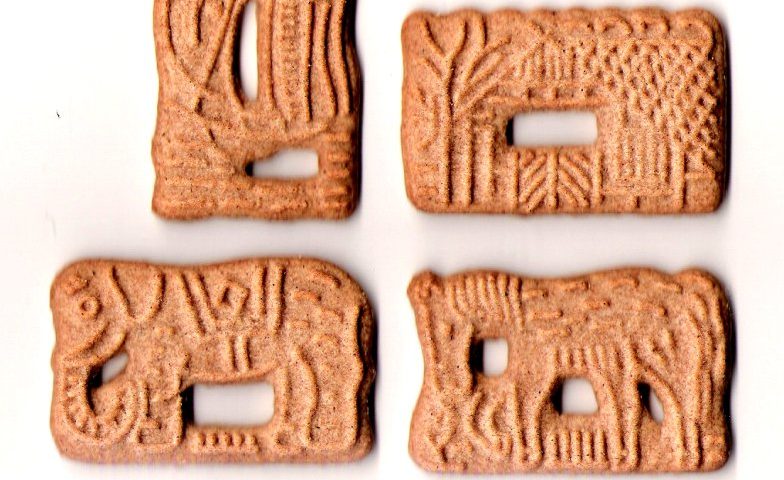
Speculaas are spiced biscuits which usually have images such as windmills and elephants pressed into them. They are known for their distinctive flavour which comes from the speculaas spice mix consisting of cinnamon, ginger, cloves, aniseed, coriander, white pepper, nutmeg, cardamom, and mace. They have been a festive favourite for many years, but have more recently been used as a biscuit for dipping in coffee any time of year, and have even been turned into a speculaas-flavoured spread.
Tamales – Costa Rica
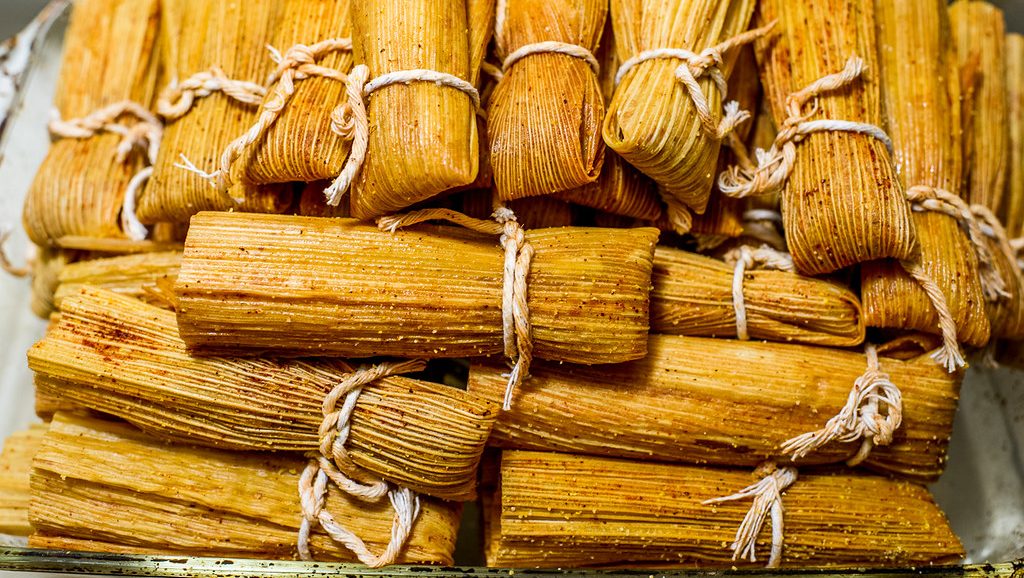
Tamales are admittedly an all year round food when there is something to be celebrated, and are not even exclusive to Costa Rica. However, when it comes to a Costa Rican Christmastime, you’d be hard done by to find a family who did not have their own special recipe for Christmas tamales. These tasty treats are corn dough wrapped in a banana leaf all filled with pork, beef or chicken. They may also contain onions, garlic, raisins, or potato amongst other ingredients.
Kołaczki- Poland
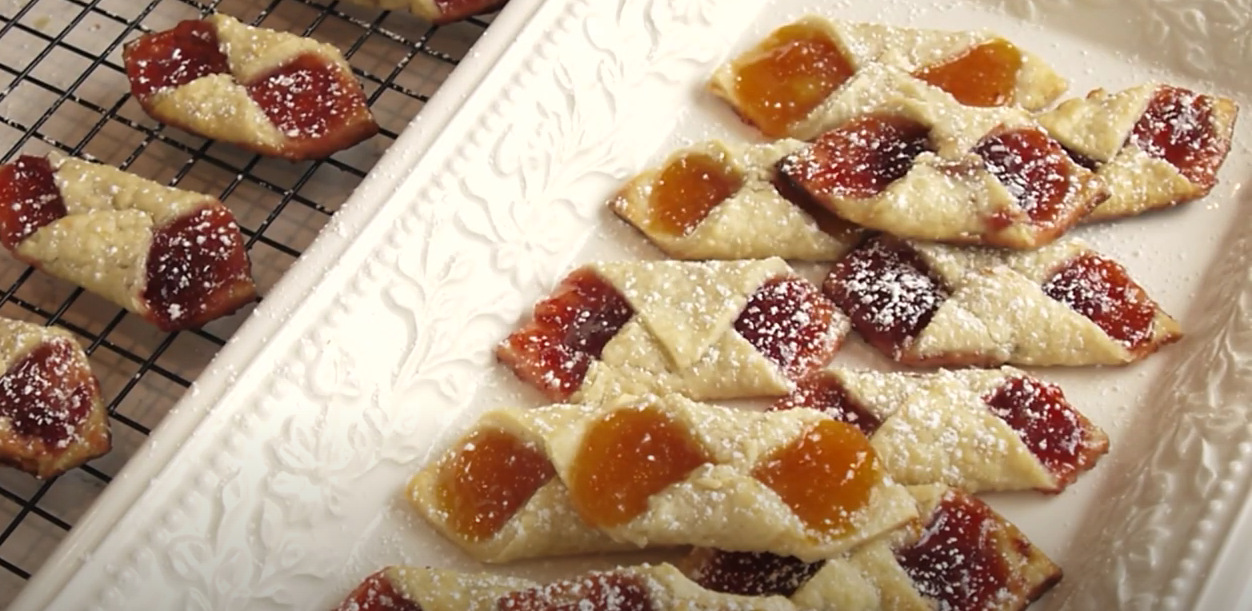
Poland goes all out for Christmas, and Kołaczki is just one of many parts of the festive meal. It is a flaky biscuit dough wrapped around a jelly or jam filling. The dough is generally made with sour cream or cream cheese, and the traditional fillings are apricot or raspberry. It is pretty common to see Kołaczki with less traditional fillings as well though.
Saffron Buns – Sweden
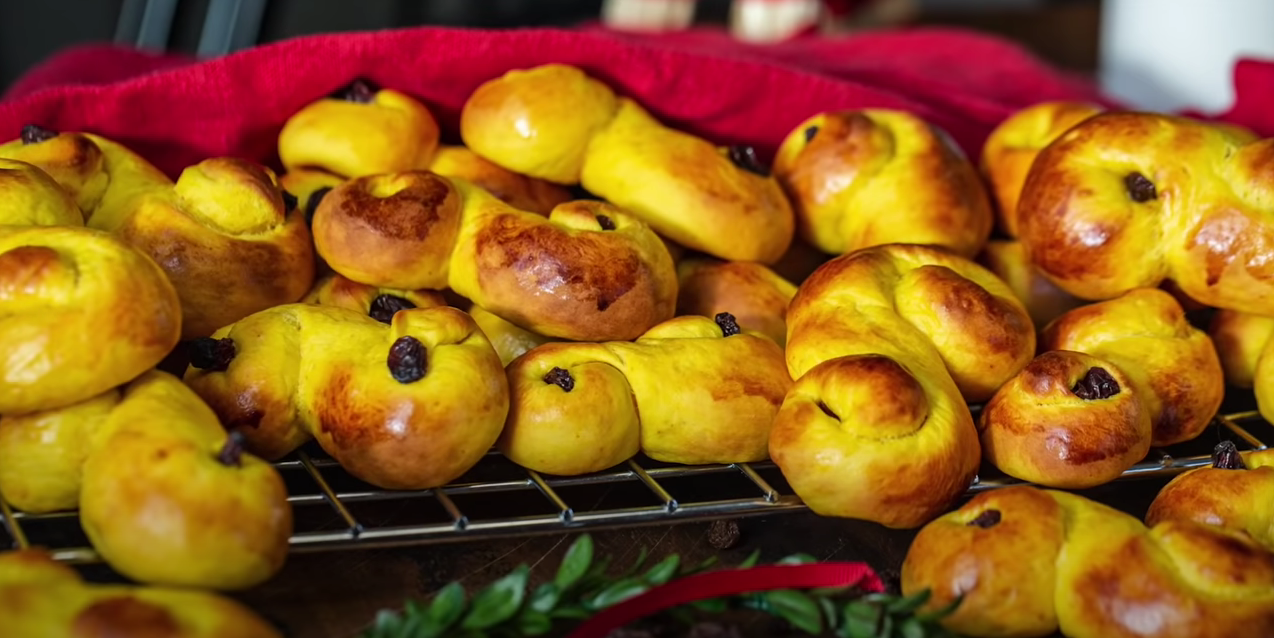
Saffron buns are sweet dessert buns that tend to be yellow, due to the saffron in them. They are shaped like the letter S and baked to a light, fluffy consistency. Traditionally, the eldest daughter in the family will make saffron buns for the family, but this patriarchal tradition has become steadily more lenient over the years.
Julepolse – Norway
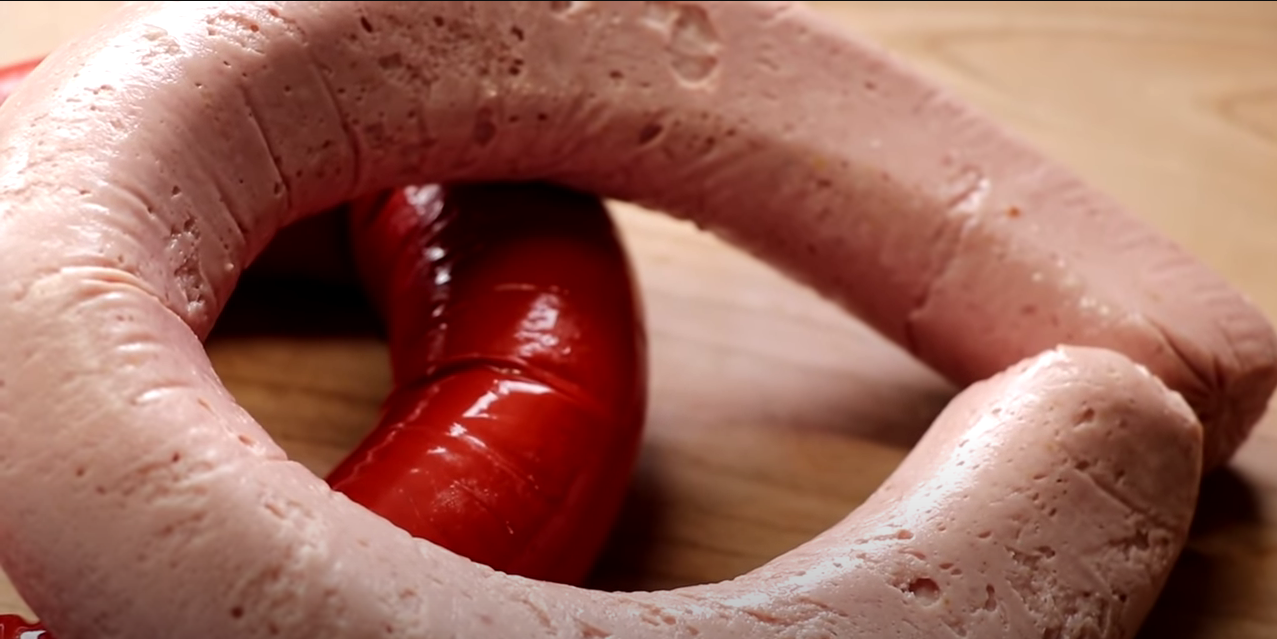
A Julepolse refers to a Norwegian Christmas sausage. Sausages are standard all year round in Norway, but what makes the Julepolse special is the added spices. It’s not everyday you make a sausage flavoured with mustard seeds, cloves, ginger, and nutmeg. Those are some of the key festive spices, after all. These sausages are long and curved, and are usually served with potatoes and sprouts.
Česnica – Serbia
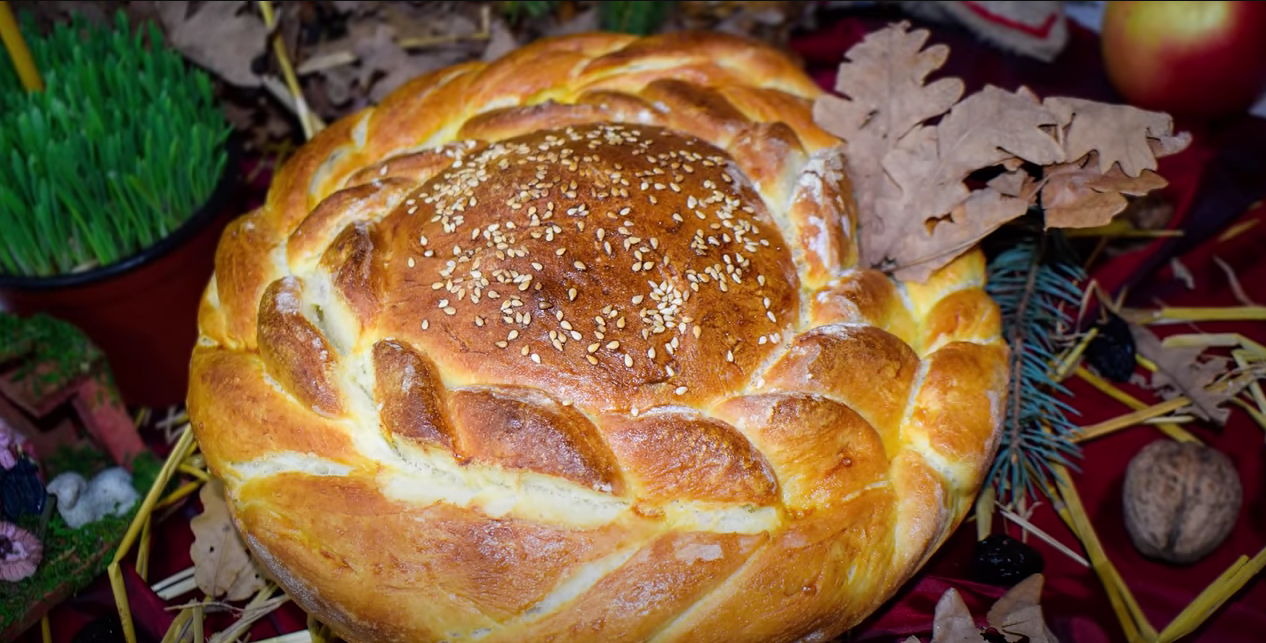
Serbia, along with other nations, has a special kind of bread which they make just for Christmastime. Česnica is a round loaf that is considered ceremonial and created with the intention of sharing it. There are certain rituals that go into the making of the bread that make it special. The water for the dough, for instance, is traditionally collected on Christmas Day from a spring or well before sunrise. A coin is also typically put into the dough, and the person who finds it is said to have a particularly lucky year coming their way.